Lion social structure
Lions are magnificent creatures that live in large social groups, known as prides. These groups are made up of related females, their cubs, and a few males. Lion social structure is complex and fascinating, and has been the subject of much study and analysis.
At the center of the lion social structure is the pride. Typically, a pride consists of 15-20 lions, but prides as large as 40 individuals have been observed. The core of the pride is made up of females, who are usually sisters or close relatives. These females are responsible for hunting, raising the cubs, and maintaining the social order of the group.
In most prides, there are one or two dominant males, known as the pride males. These males are usually brothers, and they have the responsibility of defending the pride against intruders. The pride males also mate with the females in the pride, ensuring that their genes are passed on to the next generation.
Young male lions, known as sub-adults, are typically forced out of the pride when they reach sexual maturity. These young males will form their own coalitions and may try to take over a pride of their own. This can result in fierce battles between the males, and it is not uncommon for lions to be injured or killed in these fights.
Lion social structure is complex and dynamic, and it is constantly changing. Females will leave the pride and join another group, and males will form new coalitions or attempt to take over a pride. Despite the challenges and dangers, lions have evolved to live in these complex social groups, and they have developed a sophisticated system of communication and cooperation that allows them to survive and thrive in the African savannah.
In conclusion, lion social structure is a fascinating topic that has been studied by scientists and wildlife enthusiasts for decades. The pride is the heart of the lion social system, and it is made up of females, cubs, and one or two dominant males. Young males are forced out of the pride when they reach sexual maturity, and they may form their own coalitions or attempt to take over a pride of their own. Despite the challenges and dangers, lion social structure has allowed these magnificent creatures to thrive in the African savannah for thousands of years.
Lion hunting behavior and strategies
1. Lions are opportunistic hunters: While lions are capable of hunting and killing a wide variety of prey, they are opportunistic hunters and will take advantage of any opportunity that presents itself. This means that they may switch prey depending on what is available, and will also scavenge when the opportunity arises.
2. Lions use ambush tactics: Lions are known for their stealth and patience when it comes to hunting. They will often stalk their prey and wait for the perfect moment to attack. This ambush tactic can be very effective, as it allows the lion to get close to its prey before it has a chance to react.
3. Lions hunt in groups: Unlike many other big cats, lions are social animals that hunt in groups. This allows them to take down larger prey and increases their chances of success. Female lions, in particular, work together to bring down prey, with each lion taking on a specific role in the hunt.
4. Lions use coordinated attacks: When hunting in a group, lions will often coordinate their attacks to increase their chances of success. For example, one lion may chase the prey towards another lion who is waiting in ambush, or several lions may work together to surround the prey and cut off its escape routes.
5. Lions use vocalizations to communicate: Lions use a variety of vocalizations to communicate with each other during a hunt. This includes roaring, growling, and grunting. These vocalizations help to coordinate the hunt and keep the lions in sync with each other.
6. Lions target weaker prey: Lions are intelligent hunters that will often target weaker or injured prey. This makes the hunt easier and reduces the risk of injury to the lion. However, lions are also capable of taking down healthy prey if they work together and use their hunting skills effectively.
In conclusion, lion hunting behavior and strategies are complex and fascinating. Lions are opportunistic hunters that use a variety of tactics to catch their prey, including ambush tactics, coordinated attacks, and vocalizations to communicate with each other. Their social structure allows them to hunt in groups and take down larger prey, making them one of the most successful predators in the African savannah.
Lion social structure and communication
1.Lions live in prides: Lion prides are typically made up of related females and their offspring, along with one or two dominant males. The pride provides protection, support, and companionship to its members, and the females work together to hunt, raise cubs, and maintain the social order of the group.
2. Dominance hierarchy: Within the pride, there is a dominance hierarchy that determines the rank of each individual. The dominant male(s) have the highest rank, followed by the females, and then the sub-adults. This hierarchy determines access to resources, such as food and mating opportunities.
3. Vocalizations: Lions use a variety of vocalizations to communicate with each other. Roaring is one of the most well-known vocalizations, and it is used to establish territory, attract mates, and communicate with other lions. Lions also use growls, grunts, and moans to communicate, particularly during a hunt or when interacting with other lions.
4. Scent marking: Lions also use scent marking to communicate with each other. This involves rubbing their scent glands on objects in their territory, such as trees or rocks, to leave a scent that other lions can detect. Scent marking is used to establish territory and communicate with other lions.
5. Touch: Lions also use touch to communicate with each other. This includes nuzzling, grooming, and rubbing against each other. These physical interactions help to strengthen social bonds and maintain the social order of the pride.
6. Social bonds: Lions have strong social bonds within the pride, particularly between females. These bonds are formed through grooming, playing, and other social interactions, and they help to maintain the stability and cooperation of the group.
In conclusion, lion social structure and communication are complex and fascinating. Lions live in prides that have a dominance hierarchy, and they use a variety of vocalizations, scent marking, touch, and social bonds to communicate with each other. Their social structure and communication system allow them to live and hunt cooperatively, and they are one of the most successful predators in the African savannah.
Lion physical characteristics and adaptations
1. Size and weight: Lions are the second-largest big cat, after tigers. Adult male lions can weigh up to 550 pounds (250 kg) and stand up to 4 feet (1.2 meters) tall at the shoulder, while females are typically smaller and weigh up to 400 pounds (180 kg).
2. Mane: Male lions have a distinctive mane of hair around their neck and head, which can vary in color from blond to black. The mane serves several purposes, including protecting the lion's neck during fights and attracting females during mating season.
3. Teeth and claws: Lions have strong, sharp teeth and retractable claws that they use for hunting and defense. Their teeth are adapted for slicing through tough meat and bone, while their claws help them grip and hold onto their prey.
4. Camouflage: Lions have a distinctive tawny coloration that helps them blend into their environment on the African savannah. Their fur also has a pattern of spots and stripes that helps break up their outline and make them less visible to prey.
5. Adaptations for hunting: Lions are well adapted for hunting, with several physical features that make them successful predators. For example, their powerful muscles and large lungs allow them to sprint at high speeds for short distances, while their binocular vision helps them judge distances and track moving prey.
6. Adaptations for survival: Lions also have several adaptations that help them survive in their environment, such as their ability to go without water for long periods of time and their thick fur that helps regulate their body temperature in hot weather.
In conclusion, lion physical characteristics and adaptations are well-suited for life on the African savannah. They have a distinctive appearance, including their mane and tawny coloration, and their teeth, claws, and muscular build make them formidable predators. Lions also have several adaptations that help them survive in their environment, making them one of the most successful big cats in the world.
Lion habitat loss and fragmentation
1. Habitat loss: Lions require large, open habitats with abundant prey to survive. However, human activities such as agriculture, grazing, and urbanization have led to the destruction and fragmentation of lion habitat. As a result, lions are forced to live in smaller and more isolated areas, which can lead to reduced genetic diversity and increased risk of inbreeding.
2. Fragmentation: Fragmentation occurs when large areas of natural habitat are divided into smaller, isolated fragments by human activities such as roads, fences, and development. Fragmentation can have a number of negative impacts on lions, including reduced access to prey, increased competition with other predators, and increased risk of human-lion conflict.
3. Human-lion conflict: As lion habitat becomes more fragmented, lions are forced to come into closer contact with humans and their livestock. This can lead to conflict, as lions may kill livestock or be killed by humans in retaliation. In some cases, lions may also attack humans, leading to injury or death.
4. Conservation efforts: Efforts to address lion habitat loss and fragmentation include the establishment of protected areas, such as national parks and reserves, where lions can live and hunt without interference from humans. These protected areas may also involve community-based conservation initiatives, where local people are involved in the management and protection of lion habitat.
5. The importance of conservation: Conservation efforts are crucial for the survival of lions in the wild. Lions are an important part of their ecosystems and play a key role in regulating prey populations. In addition, lions are a major tourist attraction, generating significant revenue for local communities through eco-tourism.
In conclusion, lion habitat loss and fragmentation are major threats to the survival of lions in the wild. These issues are caused by human activities such as agriculture, grazing, and urbanization, and can lead to reduced genetic diversity, increased risk of human-lion conflict, and decreased access to prey. Conservation efforts are crucial for the survival of lions and their ecosystems, and involve the establishment of protected areas and community-based conservation initiatives.
Lion conservation strategies and initiatives
1. Protected areas: The establishment of protected areas, such as national parks and wildlife reserves, is a key strategy for lion conservation. These areas provide a safe haven for lions and their prey, and also help to maintain healthy ecosystems.
2. Community-based conservation: Community-based conservation initiatives involve local communities in the management and protection of lion habitats. These initiatives can help to reduce human-lion conflict and support sustainable livelihoods for local people.
3. Anti-poaching efforts: Poaching is a major threat to lions, as their body parts are highly valued in some cultures for traditional medicine and other purposes. Anti-poaching efforts, such as increased law enforcement and education programs, are aimed at reducing this threat.
4. Research and monitoring: Research and monitoring programs are important for understanding lion populations and their habitats, as well as identifying threats and informing conservation efforts.
5. Education and awareness: Education and awareness programs are aimed at increasing public knowledge and support for lion conservation. These programs may involve school-based education, public outreach, and media campaigns.
6. Collaboration and partnerships: Collaboration and partnerships between governments, non-governmental organizations, and local communities are crucial for effective lion conservation. These partnerships can help to share resources, expertise, and knowledge, as well as build support for conservation initiatives.
In conclusion, lion conservation strategies and initiatives are aimed at protecting lions and their habitats, reducing human-lion conflict, and increasing public support for lion conservation. These initiatives involve a range of approaches, including the establishment of protected areas, community-based conservation, anti-poaching efforts, research and monitoring, education and awareness, and collaboration and partnerships. These efforts are crucial for the survival of lions and the maintenance of healthy ecosystems in which they live.
Lion behavior and interactions with other predators
1. Social behavior: Lions are highly social animals and live in prides consisting of several females, their cubs, and a few males. These prides work together to hunt and defend their territories.
2. Hunting behavior: Lions are apex predators and are known for their strength and hunting skills. They typically hunt in groups, using stealth and cooperation to bring down large prey like buffalo and zebras.
3. Interactions with other predators: Lions have complex relationships with other predators in their ecosystems. For example, they may compete with hyenas for food and territory, and may kill leopard cubs to reduce competition for prey. However, lions may also form alliances with other predators, such as cheetahs and wild dogs, to help them hunt and defend their territories.
4. Scavenging behavior: Lions are also known for their scavenging behavior, and will often scavenge the kills of other predators or animals that have died from natural causes.
5. Conflict with humans: As human populations grow and encroach on lion habitats, conflict between lions and humans has become a major issue. Lions may attack humans or their livestock, leading to retaliation from humans and further conflict.
6. Conservation efforts: Efforts to protect lion populations and reduce conflict with humans include the establishment of protected areas, anti-poaching efforts, community-based conservation initiatives, and education and awareness programs.
In conclusion, lion behavior and interactions with other predators are complex and varied. Lions are social animals that work together to hunt and defend their territories, and may compete with or form alliances with other predators. As human populations grow, conflict between lions and humans has become a major issue, and conservation efforts are crucial for protecting lion populations and reducing conflict.
Lion mating and reproductive biology
1. Mating behavior: Lions are polygamous, meaning that males mate with multiple females. During mating season, which can occur at any time of year, males will actively seek out females in estrus (i.e. those that are fertile and ready to mate).
2. Courtship behavior: Male lions will typically engage in courtship behavior, such as nuzzling and licking the female's neck and head, before attempting to mount her.
3. Copulation: Copulation between lions is quick and often repeated over a period of several days. During copulation, the male will mount the female from behind and use his forepaws to grip her flanks.
4.Gestation: The gestation period for lions is approximately 110 days, after which the female will give birth to a litter of one to six cubs.
5. Cub rearing: Lion cubs are born blind and helpless, and rely on their mother for food and protection. Female lions will typically keep their cubs hidden in dense vegetation for the first few weeks of their lives.
6. Pride dynamics: Lion pride dynamics can have a significant impact on mating and reproductive biology. For example, male lions will often kill the cubs of rival males in order to increase their chances of mating with the females in the pride.
7. Conservation efforts: Lion populations have been declining in recent years, due in part to habitat loss, hunting, and other threats. Conservation efforts aimed at protecting lion populations and their habitats are crucial for the survival of these magnificent animals.
In conclusion, lion mating and reproductive biology are complex processes that are influenced by a variety of factors, including pride dynamics and environmental conditions. The gestation period for lions is relatively short, and cubs are born helpless and rely on their mother for survival. As human populations continue to grow and encroach on lion habitats, conservation efforts are crucial for protecting lion populations and ensuring their continued survival.
Lion impact on ecosystem health and biodiversity
1. Apex predator: Lions are apex predators, meaning that they are at the top of the food chain in their ecosystem. As such, they play an important role in regulating the populations of other species within their habitat.
2. Prey population control: Lions help control the populations of herbivores, such as gazelles and zebras, by preying on weaker or injured individuals. This helps prevent overgrazing, which can lead to habitat degradation and reduced biodiversity.
3. Scavenging: Lions are also important scavengers, consuming carrion from other predators or animals that have died from natural causes. This helps reduce the risk of disease outbreaks and helps keep the ecosystem clean.
4. Keystone species: Lions are considered a keystone species, meaning that they have a disproportionately large impact on their ecosystem compared to their population size. Their presence or absence can have significant effects on the abundance and diversity of other species in their habitat.
5. Trophic cascades: The removal of lions from an ecosystem can have cascading effects on the entire food chain. Without lions to control herbivore populations, vegetation can become overgrazed, leading to habitat degradation and reduced biodiversity.
6. Conservation efforts: Conservation efforts aimed at protecting lion populations and their habitats can have broader impacts on ecosystem health and biodiversity. By protecting lions, we can help ensure the stability and health of their ecosystems.
In conclusion, lions play a vital role in regulating ecosystem health and biodiversity. As apex predators and keystone species, they help control prey populations and maintain the balance of their ecosystems. Conservation efforts aimed at protecting lion populations can have positive impacts on broader ecosystem health and biodiversity, making them a critical species for conservation efforts.
Lion symbolism and cultural significance in different societies
1. Royalty and power: In many cultures, lions have been associated with royalty and power. This is likely due to their regal appearance and status as apex predators. For example, the lion is a symbol of the British monarchy and is prominently featured on the country's coat of arms.
2. Courage and bravery: Lions are also often associated with courage and bravery. This is likely due to their reputation as fierce predators that are not afraid to take on larger prey. In many cultures, lion symbolism is used to represent bravery and strength.
3. Protection and guardianship: In some cultures, lions are seen as protective and nurturing. For example, in Ancient Egypt, lions were often depicted as protectors of the pharaohs and were associated with the goddess Sekhmet, who was seen as a guardian and protector.
4. Spirituality and mythology: In many cultures, lions play a prominent role in mythology and spirituality. For example, in Hinduism, the goddess Durga is often depicted riding a lion, symbolizing her power and strength. In Greek mythology, the Nemean lion was a powerful and fearsome beast that was ultimately defeated by the hero Heracles.
5. National identity: Lions are also often used as symbols of national identity. For example, the lion is the national animal of several countries, including Sri Lanka, Ethiopia, and Belgium.
6. Conservation: In recent years, lion symbolism has also been used to raise awareness about conservation efforts aimed at protecting the species. For example, the Lion King franchise has been used to promote lion conservation and raise awareness about the threats facing the species.
In conclusion, lions have played an important role in human culture and society for thousands of years. Their symbolism has been used to represent power, bravery, protection, and spirituality, among other things. As we continue to face challenges in protecting lion populations, their cultural significance can be used to raise awareness and support conservation efforts.
Lion-human conflict and coexistence
1. Habitat loss: As human populations continue to grow and expand, lion habitats are being destroyed and fragmented. This puts lions in closer proximity to human settlements, increasing the likelihood of conflict.
2. Livestock predation: Lions often prey on livestock, which can cause significant economic losses for farmers and ranchers. This can lead to retaliation killings, where lions are hunted or poisoned in order to protect livestock.
3. Human safety: Lions are apex predators and can pose a significant threat to human safety, especially in areas where they come into close contact with people. In some cases, lions have been known to attack and kill humans.
4. Coexistence strategies: To mitigate conflict, a number of coexistence strategies have been developed. These include measures such as using guard dogs, building protective enclosures for livestock, and educating communities about how to safely coexist with lions.
5. Ecotourism: Lions are a major draw for ecotourism, which can provide economic benefits to local communities and incentivize conservation efforts. By promoting responsible tourism practices, we can help ensure that lion populations are protected and supported.
6. Conservation efforts: Ultimately, the best way to address lion-human conflict is through conservation efforts aimed at protecting lion populations and their habitats. By promoting sustainable land-use practices and protecting wildlife corridors, we can help ensure that lions are able to thrive in their natural habitats.
In conclusion, lion-human conflict is a significant challenge that requires a multifaceted approach. By developing coexistence strategies, promoting ecotourism, and supporting conservation efforts, we can help mitigate conflict and ensure that lions are able to coexist with humans in a sustainable way.
Here are 7 FAQs about lions
1. What is a lion?
A lion is a large carnivorous mammal belonging to the Felidae family. It is known for its distinctive mane, which is only found in males.
2. Where do lions live?
Lions are found in sub-Saharan Africa, as well as in some parts of India. They prefer grassy plains, savannas, and scrubland habitats.
3. What do lions eat?
Lions are apex predators and hunt a variety of prey, including wildebeest, zebras, antelopes, and sometimes even buffalo or giraffes. They are also known to scavenge and will sometimes eat carrion.
4. How big do lions get?
Lions are the second-largest cat species, with males typically weighing between 330 to 550 pounds and females weighing between 265 to 395 pounds. Adult males can grow up to 10 feet in length, including their tail.
5. Are lions social animals?
Yes, lions are social animals and live in groups called prides. A pride usually consists of several adult females, their cubs, and a few males. The females do most of the hunting, while the males defend the pride's territory.
6. Are lions endangered?
Yes, lions are considered a vulnerable species by the International Union for Conservation of Nature (IUCN). Their populations have declined significantly due to habitat loss, poaching, and human-wildlife conflict.
7. Can lions roar?
Yes, lions are known for their distinctive roar, which can be heard up to 5 miles away. Only male lions have manes and can roar, while both male and female lions can growl, meow, and purr.

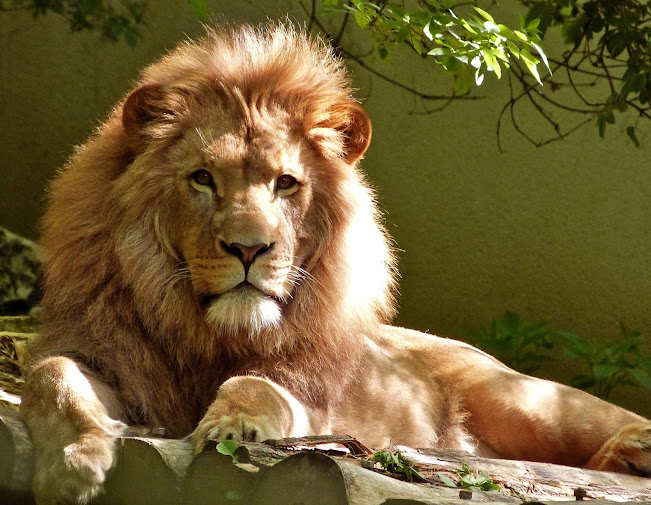
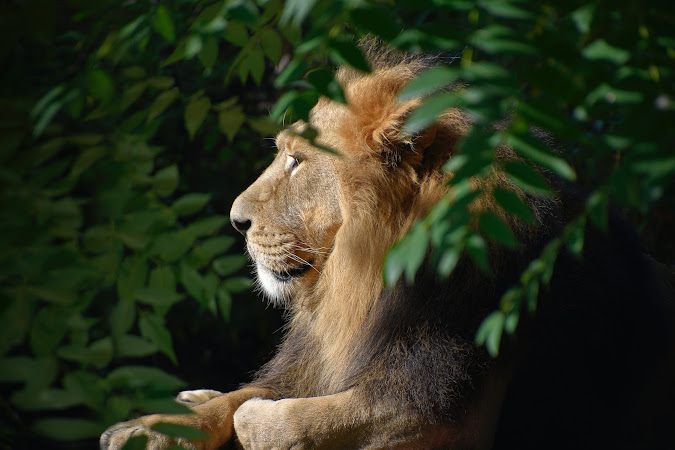
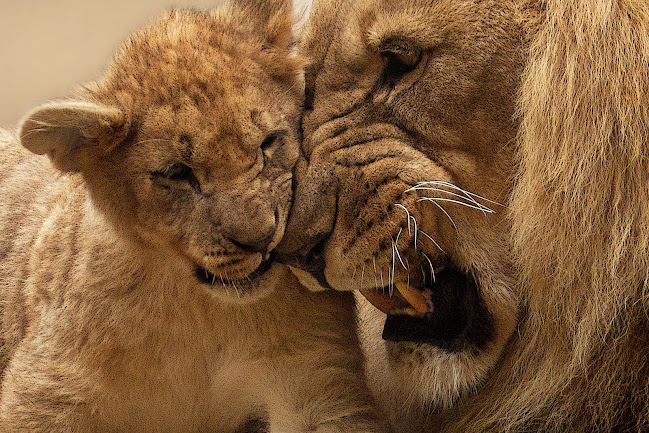



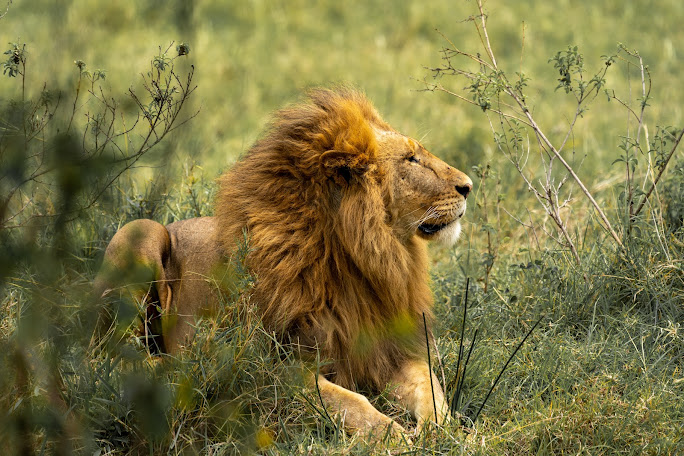
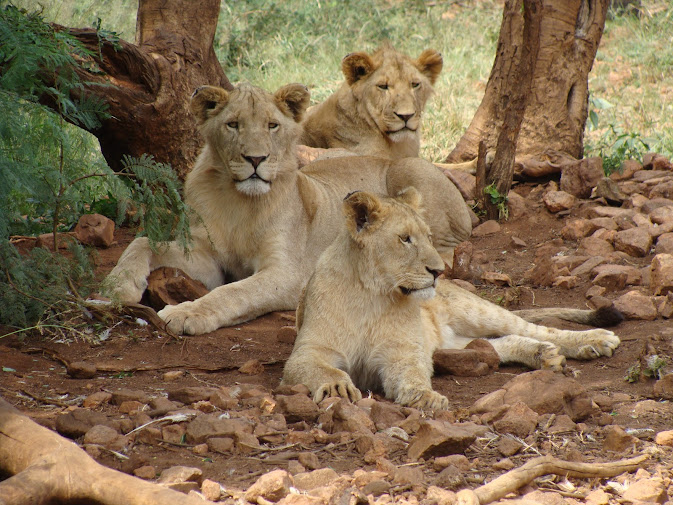
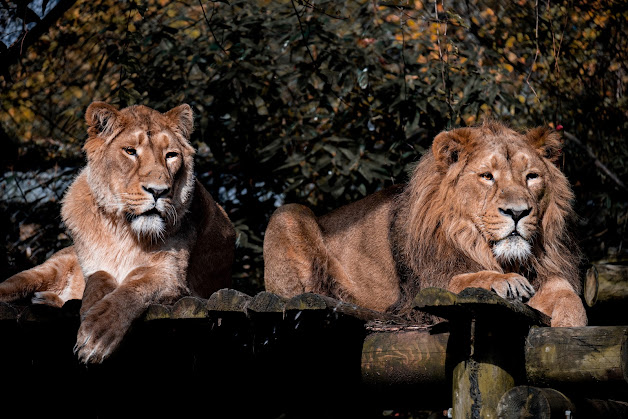
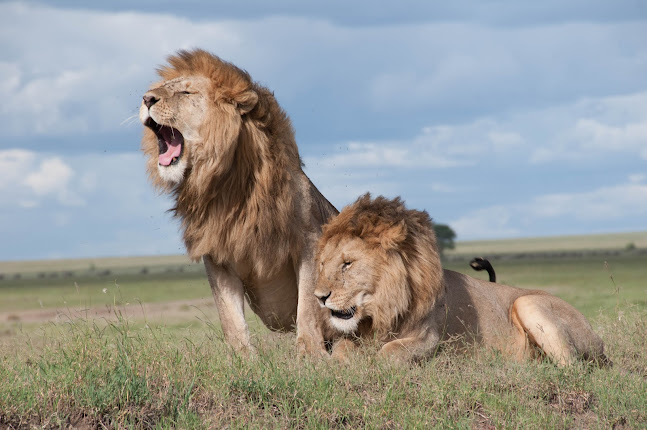
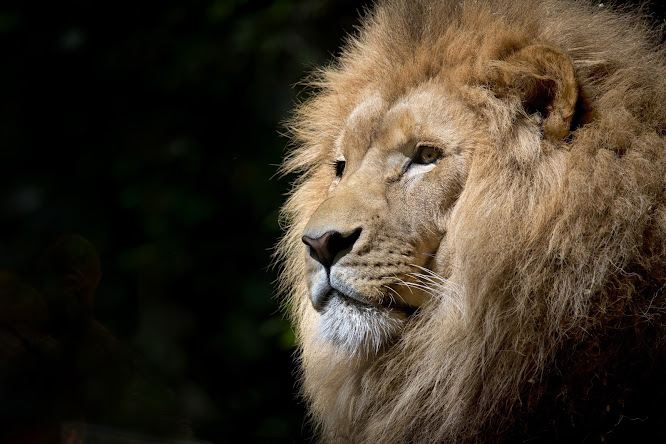
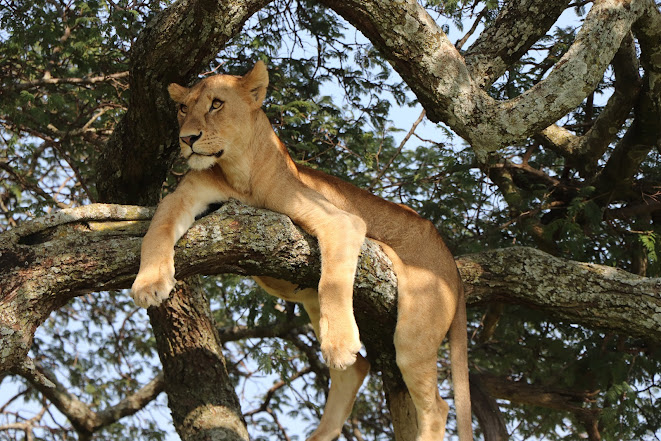



Comments
Post a Comment